(Page créée avec « Concrete Filter Construction Manual ») |
(Page créée avec « This manual produced by the Center for Affordable Water and Sanitation Technologies (CAWST) is free and open-source. It can be downloaded at the following address: https:/... ») |
||
| Ligne 200 : | Ligne 200 : | ||
{{Tuto Step | {{Tuto Step | ||
|Step_Title=Concrete Filter Construction Manual | |Step_Title=Concrete Filter Construction Manual | ||
| − | |Step_Content= | + | |Step_Content=This manual produced by the Center for Affordable Water and Sanitation Technologies (CAWST) is free and open-source. It can be downloaded at the following address: https://resources.cawst.org/construction-manual/a90b9f50/biosand-filter-construction-manual |
|Step_Picture_00=Water_-_Biosand_Filter_cawst.JPG | |Step_Picture_00=Water_-_Biosand_Filter_cawst.JPG | ||
}} | }} | ||
Version du 15 juin 2023 à 19:26
Description
The biosand filter is a household water filter that makes dirty water drinkable.
Sommaire
Sommaire
- 1 Description
- 2 Sommaire
- 3 Introduction
- 4 Video d'introduction
- 5 Étape 1 - How does the biosand filter work?
- 6 Étape 2 - OHorizons Wooden Mold Construction Manual
- 7 Étape 3 - Concrete Filter Construction Manual
- 8 Étape 4 - Série vidéo de construction du filtre bio-sable
- 9 Étape 5 - Question fréquemment posées
- 10 Commentaires
Introduction
This document will help you understand the fundamental principles of the biosand filter (FBS): how it works, the different elements and why it might be a good technology for your project. If you have other questions that this document doesn’t answer, don’t hesitate to contact us (info@ohorizons.org).
The biosand filter (FBS) was invented in the 1990s by Dr. David Manz at the University of Calgary. Simply put, the FBS is a domestic water filter that makes dirty water safe to drink. This particular type of filter is an adaptation of the traditional slow sand filter used for community water treatment for almost 200 years.
The FBS is smaller and adapted for intermittent use, which makes it the most appropriate for households of around 5 people. The filter body, or the exterior of the filter, both known under the name of filter housing, are commonly made of concrete, but can also be made of plastic. Regardless of the type of filter housing, an FBS is filled with carefully prepared layers of sand and gravel. The FBS eliminates nearly all of the impurities and pathogens in the water- up to 99%! The FBS is an excellent low-tech way to purify drinking water and is used in communities around the world.
Why choose an FBS?
Providing access to drinking water is a complex and multi-faceted problem; choosing the right technology is only one aspect of the project. Other aspects like educating users, teaching good hygiene practices and monitoring are also extremely important and must be taken into consideration.
Procuring drinking water is complicated in part because the water can be contaminated in many ways and at nearly every step in the process of collecting it. Certain frequent causes of water contamination are: improper disposal of human waste (inadequate sanitary facilities), poor hygiene (failure to wash hands), livestock excrement (particularly if the water is collected in an unprotected river or stream), agricultural run-off and industrial waste. These are just a few of the ways water can become contaminated.
In numerous regions, drinking water is collected from lakes, rivers or ponds where the rate of contamination can be very high. In other places, people get their drinking water from community wells or in a borehole. Pumped water may or may not be clean. Even if it is clean, there are multiple possibilities of recontamination, in particular if the water is not kept in a secure receptacle. Because the water can be contaminated in many ways, even if the water is clean when collected, OHorizons has concentrated their efforts on the FBS, which is a point-of-use technology. As the name suggests, this technology treats the water where it is used, generally in the home. It gives maximum control to its users over the treatment of their water and reduces the risks of recontamination.
The construction manual for the filter is open-source and can be downloaded for free at the following address: https://www.biosandfilters.info/
A series of videos created to show, step-by-step, how to construct and install a concrete biosand filter: https://washresources.cawst.org/fr/collections/714c93ae/how-to-build-a-biosand-filter-video-collection
The OHorizons Wooden Mold Building Manual is open source and can be downloaded for free at the following address: http://ohorizons.org/resources/Youtube
Matériaux
Construction of one wooden OHorizons mold:
- 4x8 ft. Plywood 3/4 inches thick
- Lumber 1.5x1.5 inches (8 pieces 46 cm long, 4 pieces 40 cm long, 4 pieces 35 cm long)
- 16 Bolts with hex heads and fully threaded
- 12 hinges with screws about 2.5 inches long
- 17 nuts
- 33 washers
- 75 wood screws, each 4cm long
- 60 wood screws, each 3cm long
- 1 Bolt 4-5 inches long
Construction of the concrete filter body
- Plastic tubes (polyethylene or vinyl) 6mm (1/4") ID and 9mm (3/8") OD
- Sturdy tape
- Oil (food grade)
- Brush or cloth to apply the oil
- 12 liters of cement
- 24 liters of 1mm (0.04") sand
- 12 liters of 12mm (1/2 ) gravel
- 12 liters of 6mm (1/4 ) gravel
- Water - about 7-10 liters
- Soap
Preparation of gravel and sand:
- Protection (e.g. a tarp or plastic sheets), a roof or building to prevent the sand from getting wet and being contaminated
- Clean Water
- 12mm (1/2") Gravel
- 6mm (1/4") Gravel
- 0.7 mm (0.03") Sand
Filter Installation:
- Approximately 3 liters of 12mm (1/2") washed gravel (drainage layer)
- Approximately 3 1/4 liters of 6mm (1/4") washed gravel (separating layer)
- Approximately 25 liters of washed 0.7mm (0.03 ) sand 40-80 liters (10-20 gallons) of water
- Chlorine
Outils
Construction of the concrete filter body
- Utility knife
- Source of heat if you are using polyethylene tubes (for example: propane or a kerosene torch, wood fire, electric burner)
- Wire brush, sandpaper or steel wool to clean the mold
- Level
- Wood wedges in different sizes
- 2 9/16" wrenches
- Containers to measure the sand, the gravel and the cement
- 1 1.5m (5’) metal rod (like rebar) or a piece of wood
- Rubber or wooden mallet
- Trowel
- Shovels
- 1 wrench 1-1/2"
- Hammer
- 4 wooden blocks (about 5cm square)
- Brush
Preparation of gravel and sand:
- 12mm (1/2") sieve
- 6mm (1/4") sieve
- 1mm (0.04") sieve
- 0.7mm (0.03 ) sieve
- Shovels
- Wheelbarrow (if available)
- Several large containers about 40 cm (15") deep
- Small clear container with lid
Installation d'un filtre:
- Tape measure
- A stick [about 100 cm (40") long, 2.5 cm x 5 cm (1 x 2") preferred]
- Burner/ diffuser
- Storage container
- A watch
- 1 liter graduated measuring container
- 1 m (3") of pipe that fits with to the exit pipe
- Vise (if available)
- Funnel (can be made with the top of a water bottle)
Étape 1 - How does the biosand filter work?
The different parts of an FBS (see photo 1) :
The bio-sand filter is composed of five distinct areas:
- The reservoir zone
- The water resting zone
- The biological zone
- The non-biological zone
- The gravel zone
What happens to the pathogens and impurities in the filter? (see photo 2)
The pathogens and suspended materials are eliminated by a combination of physical and biological processes that take place in the biological layer and within the sand layer. These processes include: mechanical entrapment, predation, adsorption, and natural death.
- Mechanical trap : Suspended matters and pathogens are physically blocked in spaces between the grains of sand.
- Predation : Pathogens are eaten by other micro-organisms in the biological layer.
- Adsorption : Pathogens are attached one to another, to suspended matters and to the grains of sand.
- Natural death : Pathogens die or end their life cycle, because there is not enough food or oxygen for their survival.
FBS Operation :
During filtration (water flows)
(see photo 3)
While water is poured into the filter, the level of water (also called the hydraulic head) is elevated and pushes the water) through the diffuser and the filter. The level of water in the reservoir drops as the water that flows steadily through the sand. When the reservoir is full, the output should be 400mL per minute. The output will diminish gradually since there is less pressure to push water through the filter. The water that goes through the filter contains dissolved oxygen, nutrients and contaminants. It brings some oxygen and nutrients that are needed by the micro-organisms in the biological layer. The suspended particles and large pathogens are caught in the first layer of sand and they are clog part of the pores between the grains of sand. This clogging slows the output of the filter over time. Users may occasionally resort to a ‘’’swirl and dump’’’ maintenance procedure to restore the output flow of the filter.
Resting period (no water flow) (see photo 4)
The water will stop flowing when the water in the reservoir gets to the same level as the end of the outlet pipe. (This is true for filters in which the outlet pipe has a diameter of 6mm. see previous page). Some of the oxygen in the air is diffused through the still water to the biological layer during the resting period. The resting period lets the microorganisms in the biological layer have time to consume the pathogens and nutrients present in the water. The pathogens in the non-biological zone (underneath the biological layer) die because they lack the nutrients and oxygen during the resting period. The resting period should last at least one hour.
What makes the FBS special? The biological layer! (see photo 5)
In an FBS, small microbes live in the top layer of sand. We call this the BIOLOGICAL LAYER. The biological layer is very important because it makes the water drinkable. It takes about 30 days to form.
- Day 1: Many microbes live in the water. They are invisible to the naked eye, but they are there! While water travels through the filter, the microbes start living in the top layer of sand.
- Day 15: With the use of the filter, more and more microbes start to live in the sand. The biological layer grows. The microbes are at ease and start looking for food.
- Day 30: After a few weeks, the microbes start to eat each other. Now, every time that you pour water, the microbes in the sand will eat the new microbes in the water, including pathogens.
Étape 2 - OHorizons Wooden Mold Construction Manual
This manual is free and open-source. It can be downloaded at the following address: https://static1.squarespace.com/static/5afb5f6225bf020305339c10/t/5bf67b714fa51a471a435d36/1542880476379/ohorizons_LeMouleEnBois_Manuel_Francais.pdf
Étape 3 - Concrete Filter Construction Manual
This manual produced by the Center for Affordable Water and Sanitation Technologies (CAWST) is free and open-source. It can be downloaded at the following address: https://resources.cawst.org/construction-manual/a90b9f50/biosand-filter-construction-manual
Étape 4 - Série vidéo de construction du filtre bio-sable
Cette série vidéo produite par le Center for Affordable Water and Sanitation Technologies (CAWST) est conçue pour montrer, étape par étape, comment construire et installer un filtre à sable biologique en béton. Elle est gratuite et peut être visionnée ici: https://washresources.cawst.org/fr/collections/714c93ae/how-to-build-a-biosand-filter-video-collection
Étape 5 - Question fréquemment posées
Réponses issus du document suivant: https://static1.squarespace.com/static/5afb5f6225bf020305339c10/t/5b4c1df8758d462d957b8a49/1531715067103/french-intro-to-bsfs_ohorizons_Introduction_au_filtre_biosable.pdf
Combien d'eau peut-on filtrer par jour?
Un filtre biosable fabriqué à partir du moule en bois d’OHorizons filtrera 11 litres par utilisation, ce qui signifie qu'il filtrera 11 litres chaque fois qu’il est rempli. Il est recommandé de remplir le filtre au maximum quatre fois par jour et au minimum une fois par jour. Ceci signifie que le propriétaire du filtre peut obtenir de 11 à 44 litres d'eau ou environ 3-12 gallons par jour. Un maximum de quatre remplissages par jour est recommandé pour permettre des périodes de pause assez longues entre chaque opération du filtre.
Combien coûte un filtre biosable?
Le coût varie selon l'endroit où le filtre est fabriqué et le coût local des matériaux et de la main-d'œuvre. En général, le coût varie entre 25 et 65dollars US par filtre.
Combien pèse un filtre?
Un filtre installé (avec le média filtrant) peut peser jusqu'à350lb ou 160kg. Une fois installés, les filtres ne doivent jamais être déplacés.La stabilisation du sable contribue à améliorer l'élimination des agents pathogènes et le sable peut être perturbé en déplaçant le filtre. Le boîtier du filtre en béton pèse environ 150lb ou 70kg. Si le filtre doit être déplacé, le sable et le gravier doivent être retirés, lavés et réinstallés au nouvel emplacement du filtre.
Combien de temps est-ce que la couche biologique met à se développer?
Après environ 30 jours d'utilisation, la couche biologique sera entièrement développée et le filtre fonctionnera à son taux optimal d'élimination des agents pathogènes. Au cours des 30 premiers jours d'utilisation, le filtre élimine environ 70% ou plus des agents pathogènes et environ 100% des agents pathogènes résistants au chlore. Pendant cette période, l'eau du filtre peut être consommée, mais nous recommandons aux utilisateurs d’aussi faire bouillir l'eau ou d'utiliser du chlore pour s'assurer que l'eau est complètement potable. OHorizons recommande cette approche à barrières multiples même au-delà de la période initiale de 30 jours. Bien que le filtre fonctionne de façon optimale après le premier mois, divers facteurs pourraient modifier son efficacité au fil du temps, comme une utilisation inappropriée par l'utilisateur ou des changements de niveaux de contamination de la source d'eau. L'emploi d'une approche à barrières multiples tout au long de la durée de vie du filtre garantit que les utilisateurs pourront toujours boire l'eau la plus sûre possible.
Pourquoi le sable ne descend-t-il pas dans le tube ou le tuyau en PVC?
Le sable ne constitue que la couche supérieure. Les deux couches inférieures du filtre se composent de gravier petit et gros. Le petit gravier empêche le sable de s’écouler et le gravier gros empêche le petit gravier de s’échapper ou d'obstruer le tube de sortie.
Outre le remplissage du filtre avec de l'eau, comment le filtre est-il entretenu? Comment le nettoyer?
Le filtre biosable nécessite très peu de nettoyage. Une fois que le boîtier en béton a complètement pris, il devrait être bien nettoyé avec de l'eau et du savon pour éliminer tout résidu de sable ou de saleté. Ensuite, il peut être rempli de sable, de gravier et d'eau en toute sécurité dans la maison de l'utilisateur. Il est recommandé d'essuyer régulièrement l'extérieur, le couvercle et la plaque du diffuseur.
Le filtre est très simple à utiliser, tout comme il est simple de prendre soin d’une plante d'intérieur. La partie la plus importante de l'entretien est de s'assurer que la couche biologique reste saine en l'alimentant une à quatre fois par jour avec de l'eau contaminée. Une fois alimentée, la couche biologique doit digérer et récupérer, il doit donc y avoir au moins une heure entre chaque utilisation. Tout comme une plante d'intérieur, la couche biologique ne peut pas survivre si il y a trop ou trop peu d'eau. Lorsque le filtre n'est pas utilisé, une couche d'eau de 5cmrecouvre le sommet du sable. Cette couche doit être maintenue ou les micro-organismes vivants peuvent mourir. Si l’on verse de l'eau trouble ou visiblement sale dans le filtre, le sable va accumuler de la saleté ce qui ralentira le débit d'eau. Pour corriger cela, une méthode non invasive qui ne perturbe pas la couche biologique appelée«remuer et jeter» est utilisée pour nettoyer la partie supérieure du sable et améliorer le débit.
Qui est responsable du maintien des filtres biosable?
Le propriétaire du filtre est responsable de son maintien. Les propriétaires sont généralement formés à la maintenance avant ou pendant l'installation du filtre. OHorizons s'assure que tous nos partenaires ont une formation approfondie en matière d'entretien et d'installation. Ces partenaires sont à la disposition des ménages pour répondre aux questions, effectuer des réparations, rééduquer et fournir une assistance supplémentaire, au besoin.
Combien de temps dure un filtre? A quelle fréquence faut-il remplacer le sable?
Sauf circonstances exceptionnelles qui causeraient une fuite dans le boîtier en béton, il ne devrait pas y avoir de raison de remplacer le filtre. S'il est correctement entretenu et installé, un filtre peut durer toute une vie et le sable n'a pas besoin d’être remplacé. Si l’on utilise de l'eau particulièrement trouble ou visiblement sale, le propriétaire du filtre emploiera régulièrement la technique du remuer et jeter pour enlever la saleté. Cette méthode enlève une petite quantité de sable et,au fil du temps, le filtre pourrait avoir besoin d’un ajout de sable de filtration supplémentaire.
Le filtre a-t-il besoin d'une pompe, de l'électricité ou d'un système mécanique pour fonctionner?
Non, le filtre biosable fonctionne par la force de gravité. La gravité tire l'eau vers le bas à travers le sable et le tuyau en raison d'un effet de siphon naturel. Il n'y a pas besoin d'électricité ni de pompes. Ceci signifie que c'est une excellente solution pour les zones quine sont pas connectées à un réseau électrique.
Y-a-t-il besoin de types spécifiques de sable?
Oui, le meilleur sable est la roche concassée qui peut être obtenue dans la plupart des carrières locales. La roche concassée ne contient pas de matière organique ou de sel que l’on trouve souvent dans le sable de la rivière ou de la plage. Le sable de roche concassée est également plus varié entaille et forme ce qui rend le filtre plus efficace. Le sable doit être lavé et tamisé avant d'être mis dans le filtre de sorte que seuls les grains d'une certaine gamme de tailles sont utilisés et rien de nuisible n’est introduit dans le filtre. Le gravier doit également être de formes variées et doit être lavé avant d'être placé dans le filtre. Veuillez consulter notre appendice pour plus d'informations sur quel est le meilleur type de sable à utiliser comme matériel de filtration.
Published
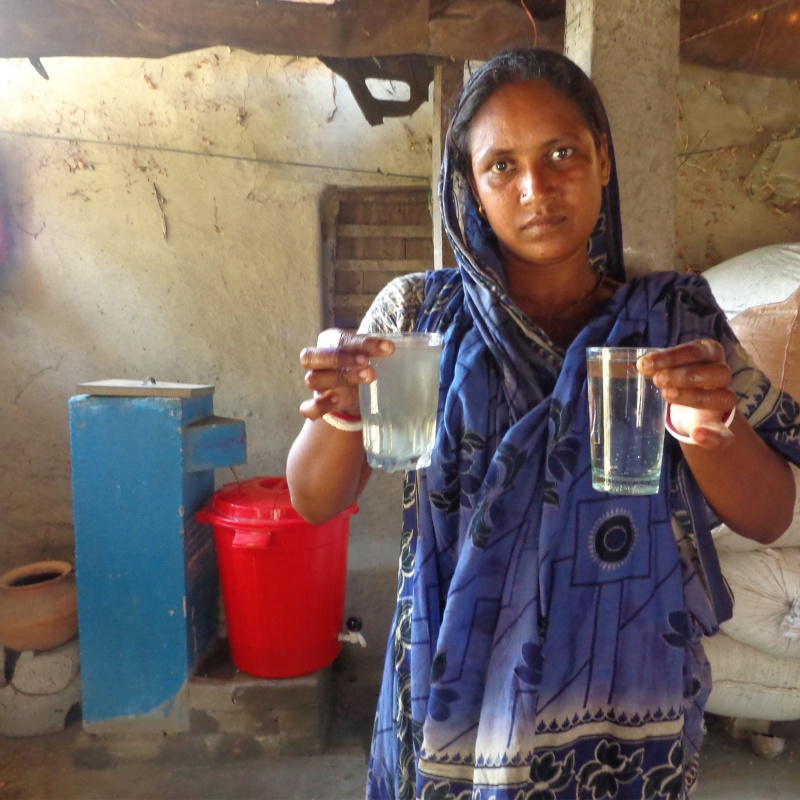
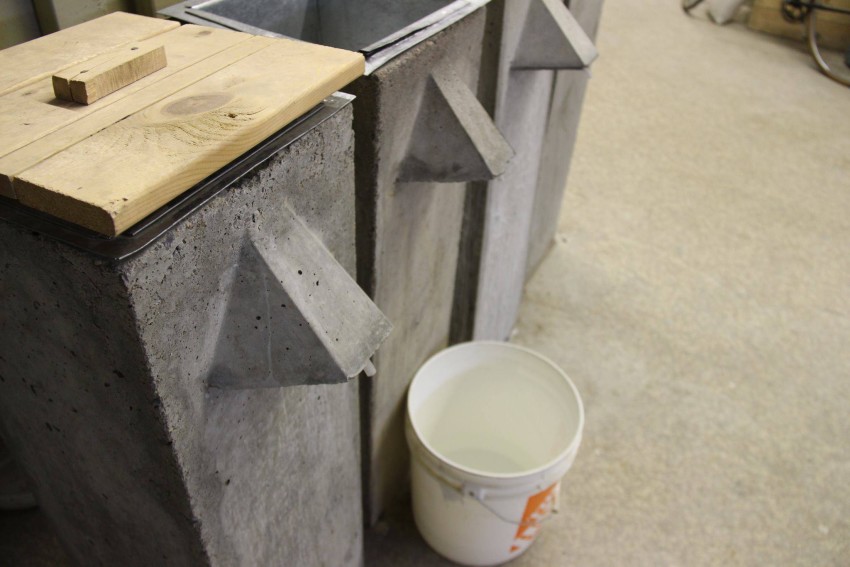
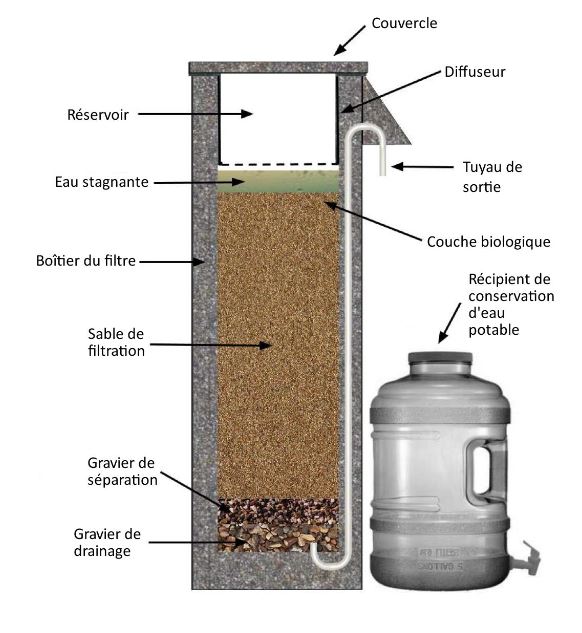
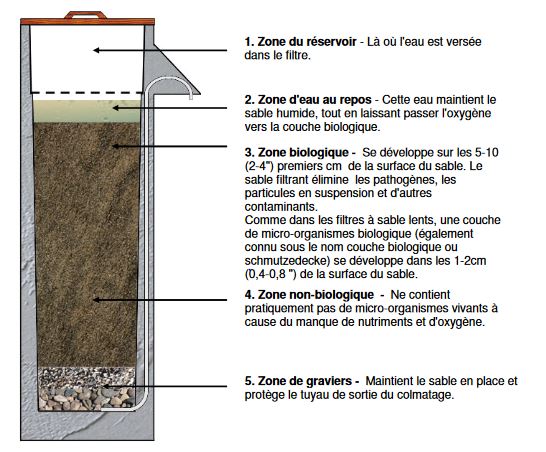
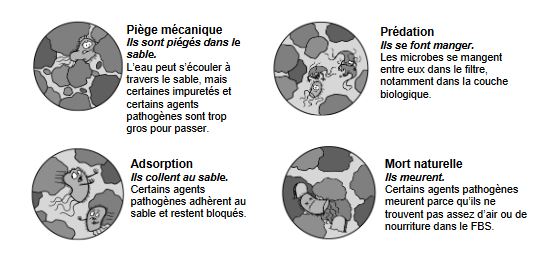
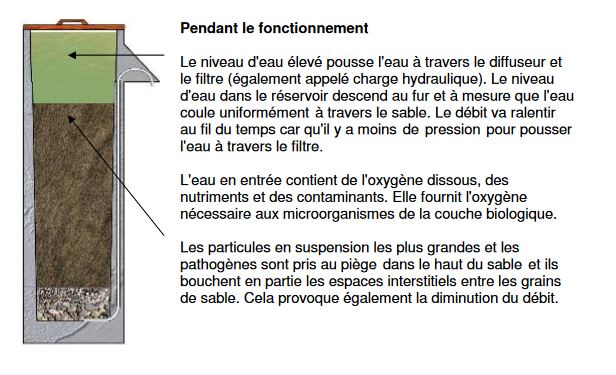
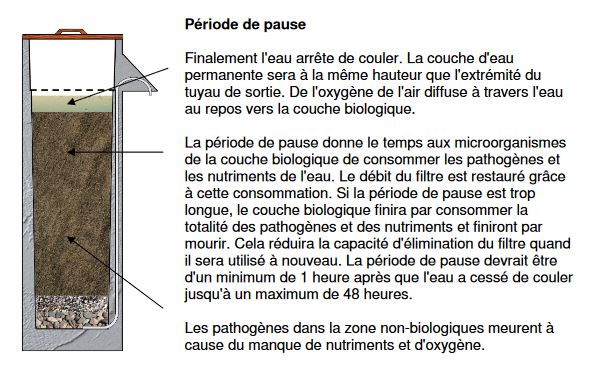
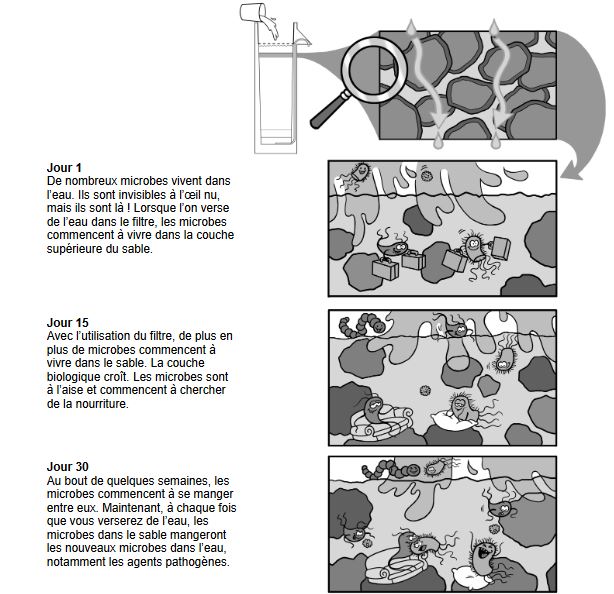
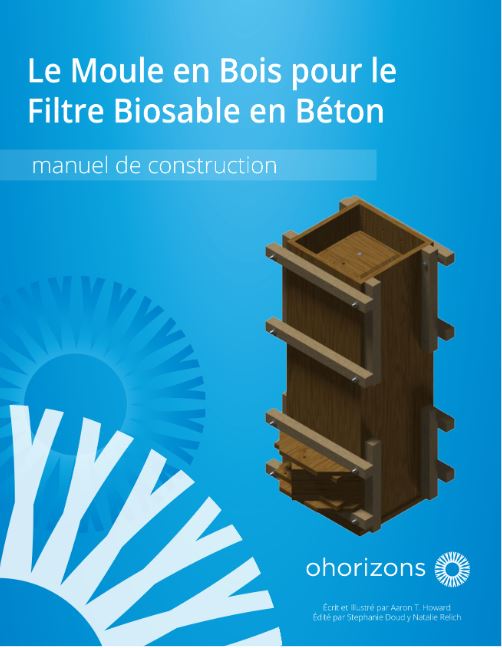
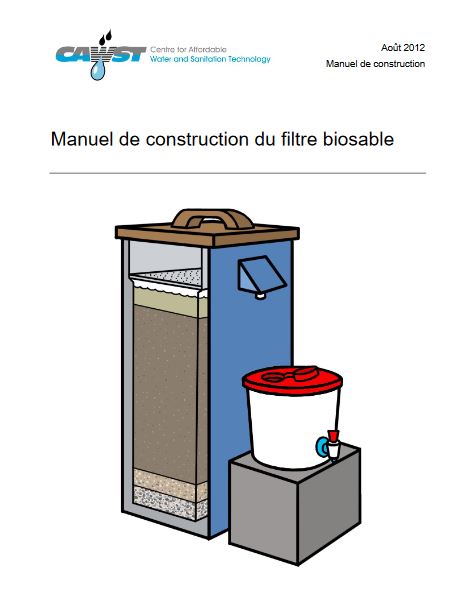
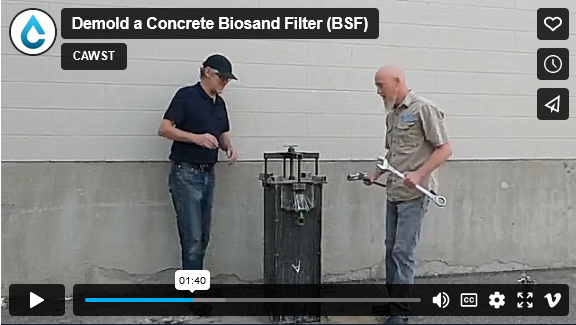
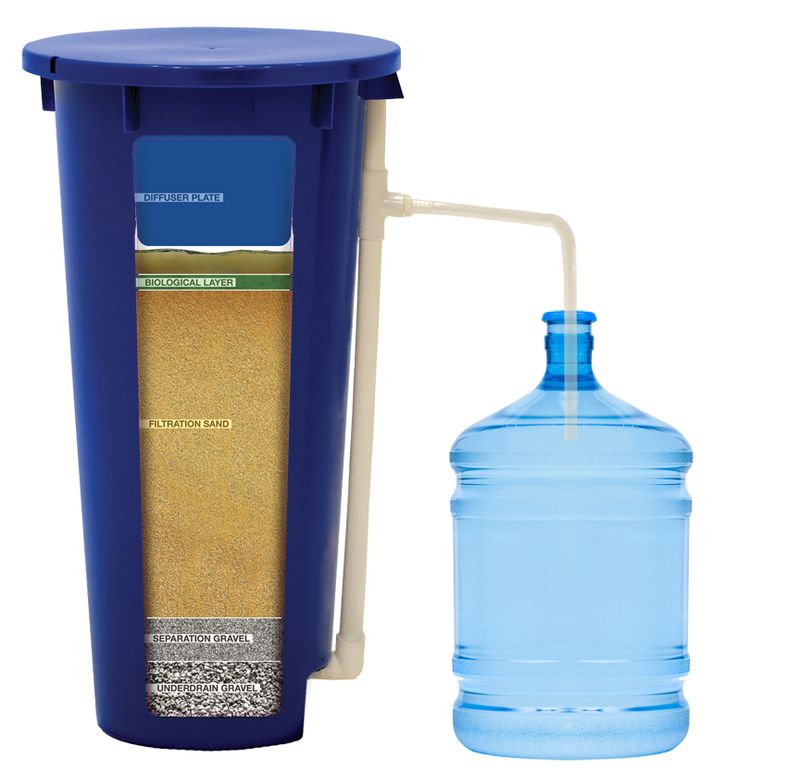
 Français
Français English
English Deutsch
Deutsch Español
Español Italiano
Italiano Português
Português